"I am happy to supply you with photos of a larger building that has recently been completed, and which, for me, is one in which I have succeeded in most clearly expressing my views on art", wrote the German architect, designer and artist Peter Behrens in 1931, "it is the central warehouse and the associated administration building of the Gutehoffnungshütte Oberhausen, Rhineland"1
With the exhibition Peter Behrens - Art and Technology that clearest expression of Behrens' view on art hosts an exhibition explaining how he arrived at such an expression, and the wider development of his understanding of the relationship between art and technology.
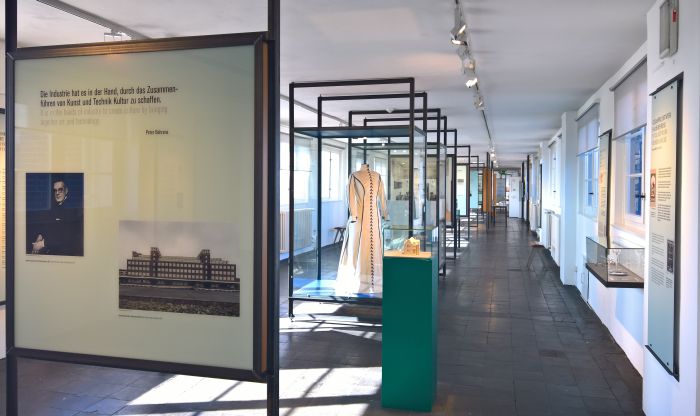
Although formally part of a triumvirate of Peter Behrens exhibitions organised in the German State of Nordrhein-Westfalen throughout 2018, unlike the temporary exhibitions #all-rounder at the Museum für Angewandte Kunst Cologne and The Practical and the Ideal @ The Kaiser Wilhelm Museum Krefeld, Peter Behrens - Art and Technology in Oberhausen is a new permanent exhibition, and as such exits as a new documentary of Behrens career in one of the regions which was most formative in his (at least early) career, and that in one of his most interesting, arguably most monumental, and certainly clearest expressions of Behrens' views on art: the former Gutehoffnungshütte, GHH, central warehouse and administrative building, completed in 1925 and today known simply as the Peter-Behrens-Bau.
Focussing (largely) on Behrens' industrial design and architecture, Art and Technology opens with his 1901 house for the Artists Colony at Mathildenhöhe Darmstadt, and thereby the moment when he most decisively moved from fine art to applied art, if you will to the combination of art and technology, and then continues on a, more or less, chronological journey through Behrens' career over episodes such as his designs for the craft industries of Hagen, his exhibition architecture and design, his time with AEG Berlin, his contributions to the Deutsche Werkbund, his monumental architectural projects, including an extended section on GHH Oberhausen, his contribution to New Objectivity and ending with his Berlin Alexanderplatz buildings from 1929/32.
And as such is also a tour through the development of architecture and design thinking in the first quarter-ish of the 20th century, as Art Nouveau lots its florid references to reveal that rationalisation that was always hidden underneath and ultimately ceded to what is popularly known today as Modernism; and a tour undertaken with a very natural ease, for, and as we believe we've said before, if not we certainly meant to, there are very few architects and designers who embody the changes of the period quite as succinctly as Peter Behrens. The line of his development isn't necessarily as linear as the exhibition format in Oberhausen, but approaches it, and more importantly the presentation in Oberhausen very clearly illustrates the nature of the development, and also the background against which it occurred, that it occurred in a context.
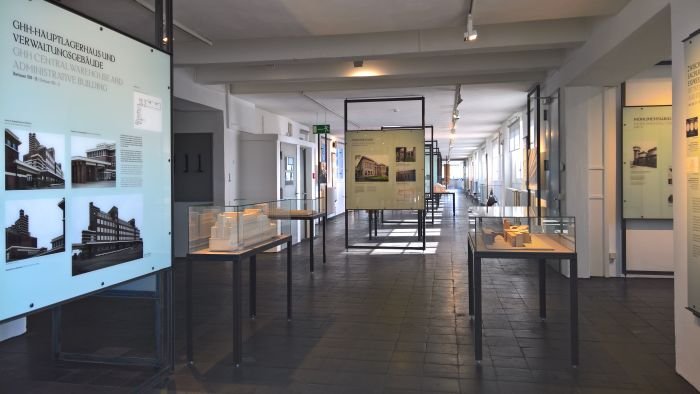
A bijou, boutique?, exhibition which makes intelligent use of clear, concise, bilingual German/English information boards, Art and Technology simply doesn't have the physical space to delve all too deep into the individual chapters of the Behrens biography. OK, yes, if it made use of the whole Peter-Behrens-Bau it arguably could, but then you'd need a week to view it; however despite the necessary brevity Art and Technology still finds the space and time to take a few interesting detours from the established Behrens' biography: his Villa Gans in Kronberg im Taunus near Frankfurt, for example, a neatly cubist, flat-roofed construction, in many regards reminiscent of Behrens' former employee Mies van der Rohe's Villa Tugendhat in Brno, whereby Behrens began his first; a (relatively rare) mention of his Professorship at the Akademie der Bildenden Künste Vienna from 1921 to 1937, and the office he maintained in the city at that period, and thereby of both his contribution to the development of inter-war Vienna and his associations with the likes of Josef Hoffmann, Josef Frank or Ernst Lichtblau, and thereby neatly underscoring the networks that existed during that period, that the developments of the period weren't isolated, but a consequence of a vibrant international exchange; or Behrens' complete plan for Berlin's Alexanderplatz.
As an exhibition Art and Technology presents numerous models of Behrens works, models created by students from the Model and Prototype Workshop at the Peter Behrens School of Arts Düsseldorf, models which very elegantly contribute to explaining how Behrens' understanding of form, proportionality, scale, representation and ornamentation developed over the course of his career, and in the case of the Alexanderplatz model, allow for a delicious taste of what could have been. Much as we admire and enjoy the two building Behrens did realise on Alex, they were only part of a wider plan, a plan which foresaw Alexanderplatz as a roundabout with a third building opposite the two realised to create a unified, self-contained, understated opulent composition with clear references to, and formal distance from, the architecture of imperial residence cities. And today.........? We can't cross Alexanderplatz without considering such. Occasionally we shed a small tear.
In addition to such detours Peter Behrens - Art and Technology also feature those legal requirements of any Peter Behrens' exhibition, the so-called "Gläser mit rubinroten füßen” goblets, an AEG kettle, the lithograph Der Kuss, the Smiling Coffee Pot for Kaiser's Berlin, an AEG kettle, an AEG fan etc, all neatly complimented by wider examples of his product and applied art design over the three decades covered by the exhibition, objects which help underscore the development of both his artistic thinking, but also his understanding of the possibilities of new technology and how he could use those possibilities to achieve his artistic aims. In addition there is a (small) selection of objects developed by AEG after Behrens had left and which very nicely demonstrate how his influence remained with he company.
The rest of the Peter Behrens - Art and Technology very nicely demonstrating how his influence remains.
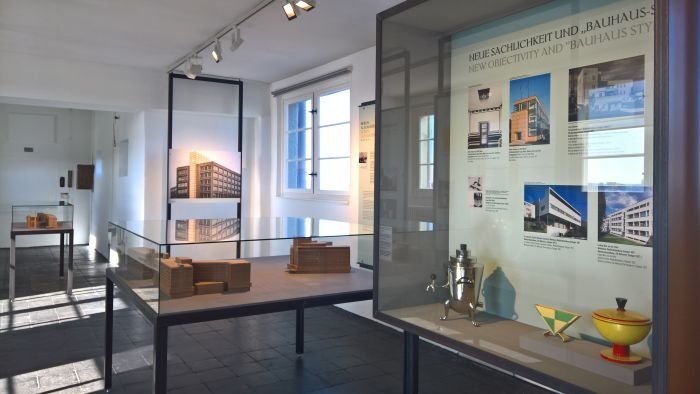
As we never tire of repeating, as the centenary of Bauhaus Weimar approaches it is increasingly important to place that one school in context of its time and place, to explain that it wasn't a "Eureka!" moment but a consequence of specific developments, and also that the development of the institute over Weimer to Bauhaus Dessau and on to the, more or less theoretical, Bauhaus Berlin and beyond wasn't an internal Bauhaus development but a component of a wider development of understandings of architecture and design, of the relationships between art and technology.
A development of understandings in which Peter Behrens played a key role, not only as the old master who took the young Walter Gropius and Ludwig Mies van der Rohe, and presumably also Carl Fieger, Adolf Meyer & Le Corbusier, for walks through Potsdam discussing with them the works of Karl Friedrich Schinkel and Ludwig Persius, but through his considerations on space, standardisation, ornamentation, proportionality, construction techniques, art, technology et al contributed greatly to the developments of the period.
Pleasingly free of architecture pseudo-babble Peter Behrens - Art and Technology provides for a very pleasing, if as we way, necessary brief and abridged overview of Peter Behrens, his architecture and his design, and thereby allows for an easy entry to the subject for all keen to learn more about Behrens.
The fact that the exhibition is being staged in a/the Peter-Behrens-Bau doesn't directly add to the experience, for that the particular space in which it is being staged is too anonymous, even if it does offer unparalleled views over the region, views neatly supported by maps and photographs showing the area as it existed in Oberhausen's heavy industry past, and which thus help place the Peter-Behrens-Bau in its contemporary landscape; however having viewed the exhibition you can not only enjoy the Peter-Behrens-Bau all the more in its context, formal relevance and simple majesty, but also begin a further investigation of the life and work of Peter Behrens on a much firmer foot.
Peter Behrens - Art and Technology runs at the LVR-Industriemuseum, Peter-Behrens-Bau, Essener Straße 80, 46047 Oberhausen until further notice.
1Die Wochenschau. Westdeutsche Illustrierte Zeitung der Essener Allgemeinen Zeitung, Nr. 21, 24. 5. 1931 As quoted in Peter Behrens - Art and Technology
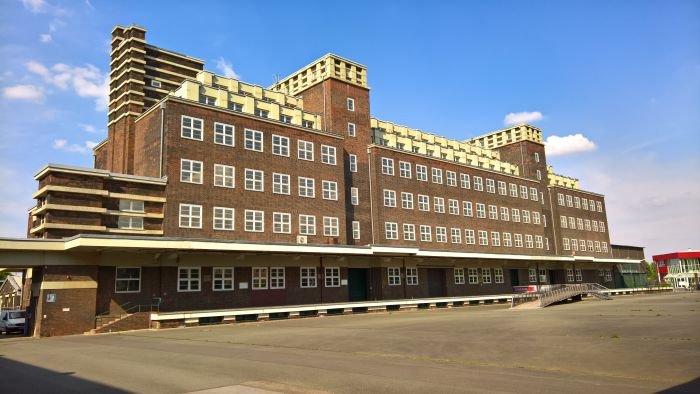
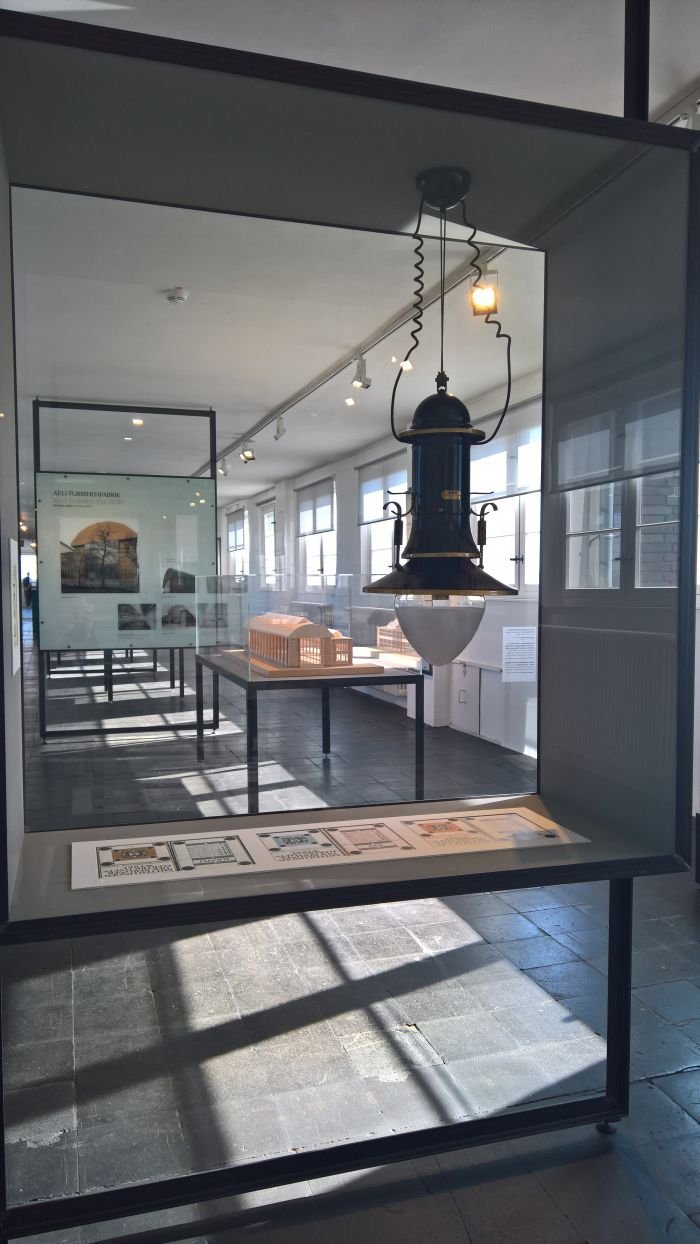
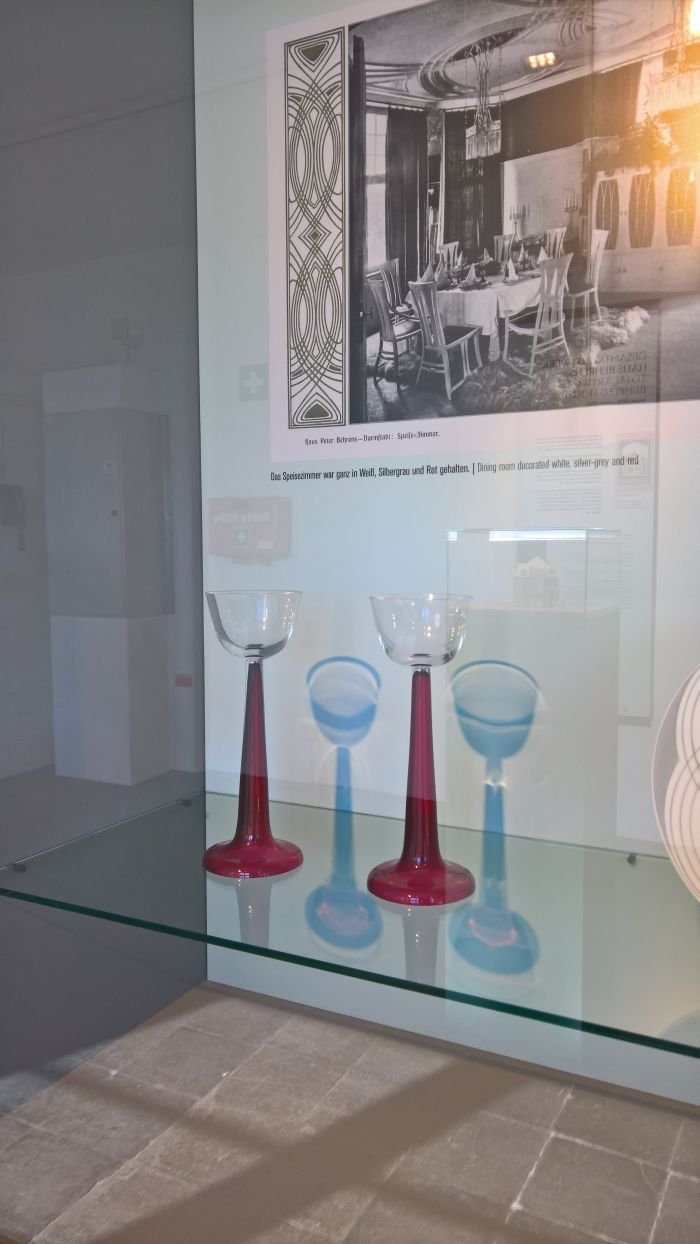
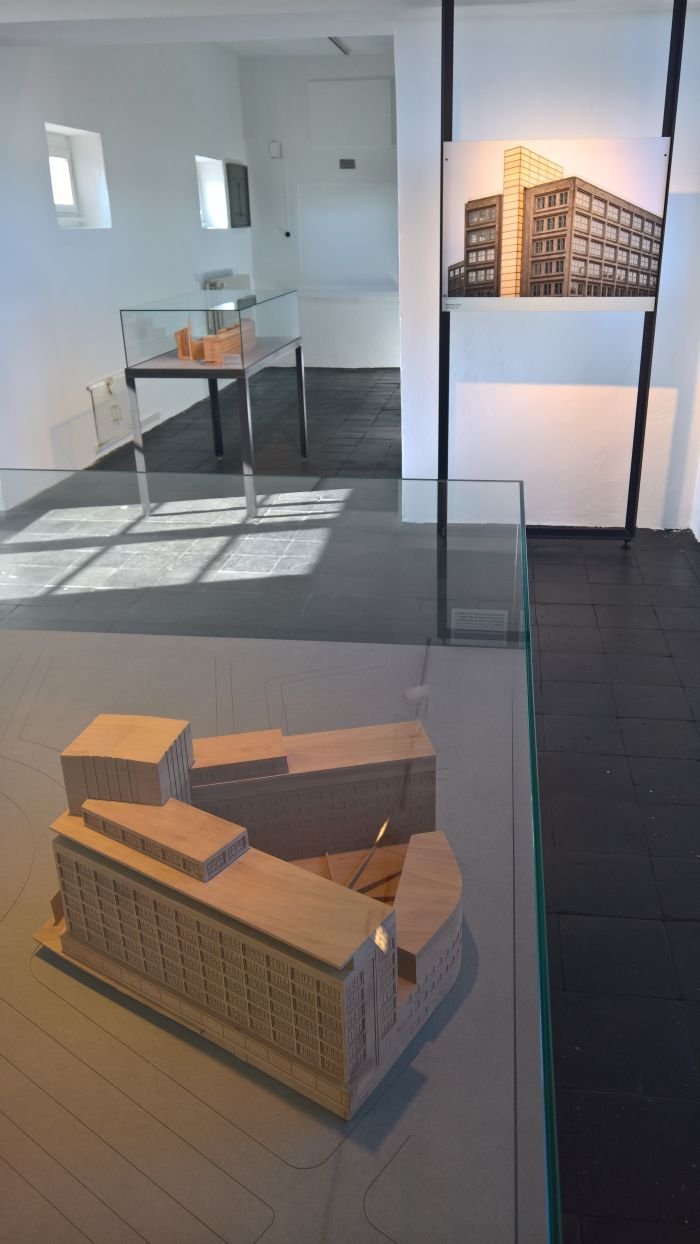
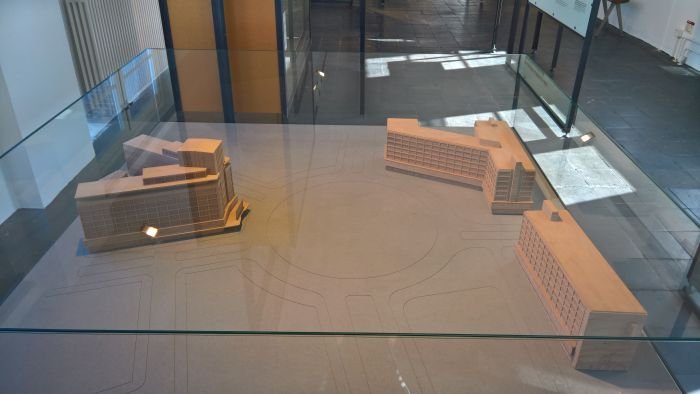
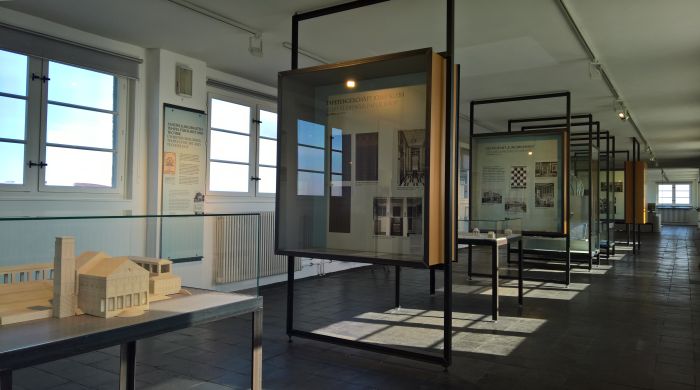
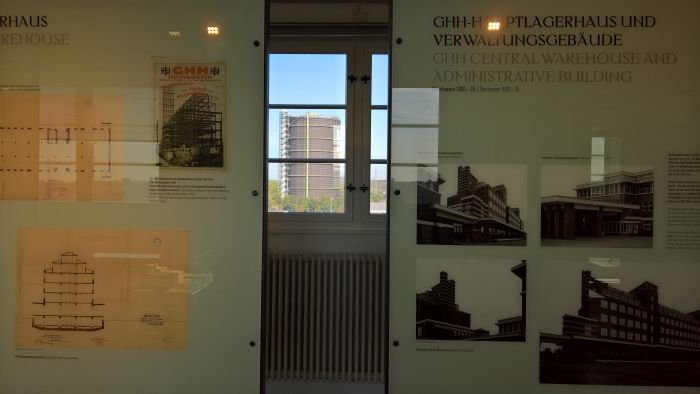
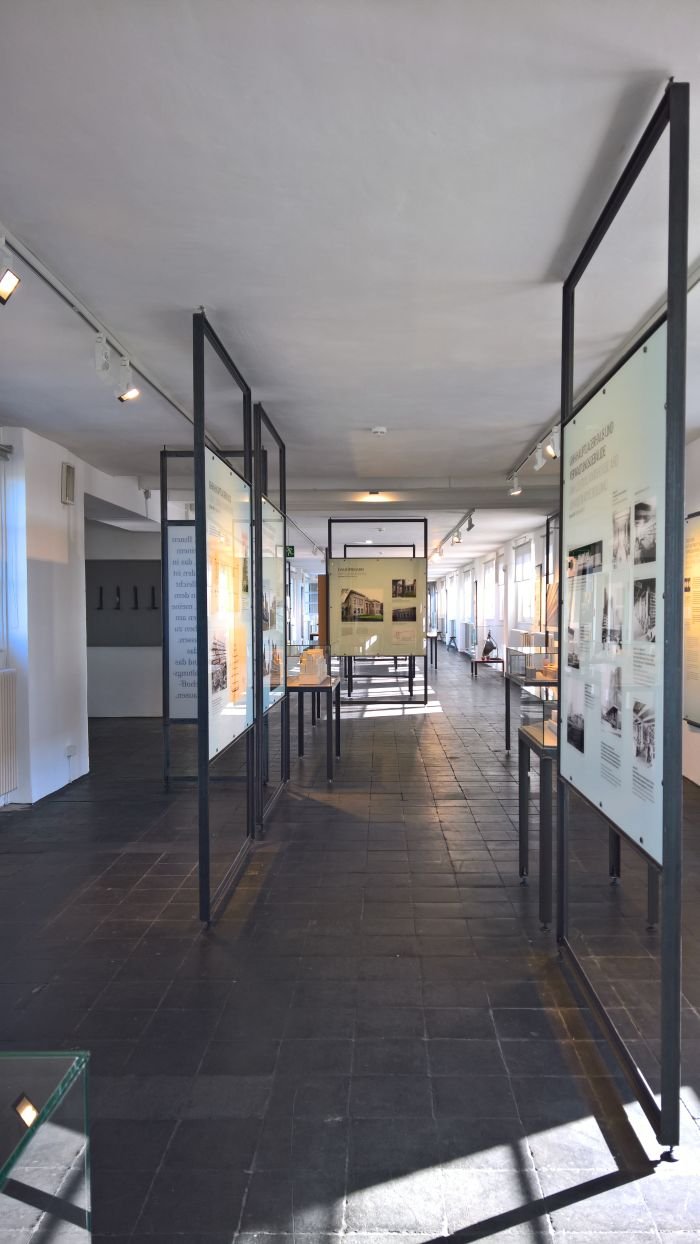
Full details, including information on the current temporary exhibition and guided tours can be found at www.industriemuseum.lvr.de/peter_behrens